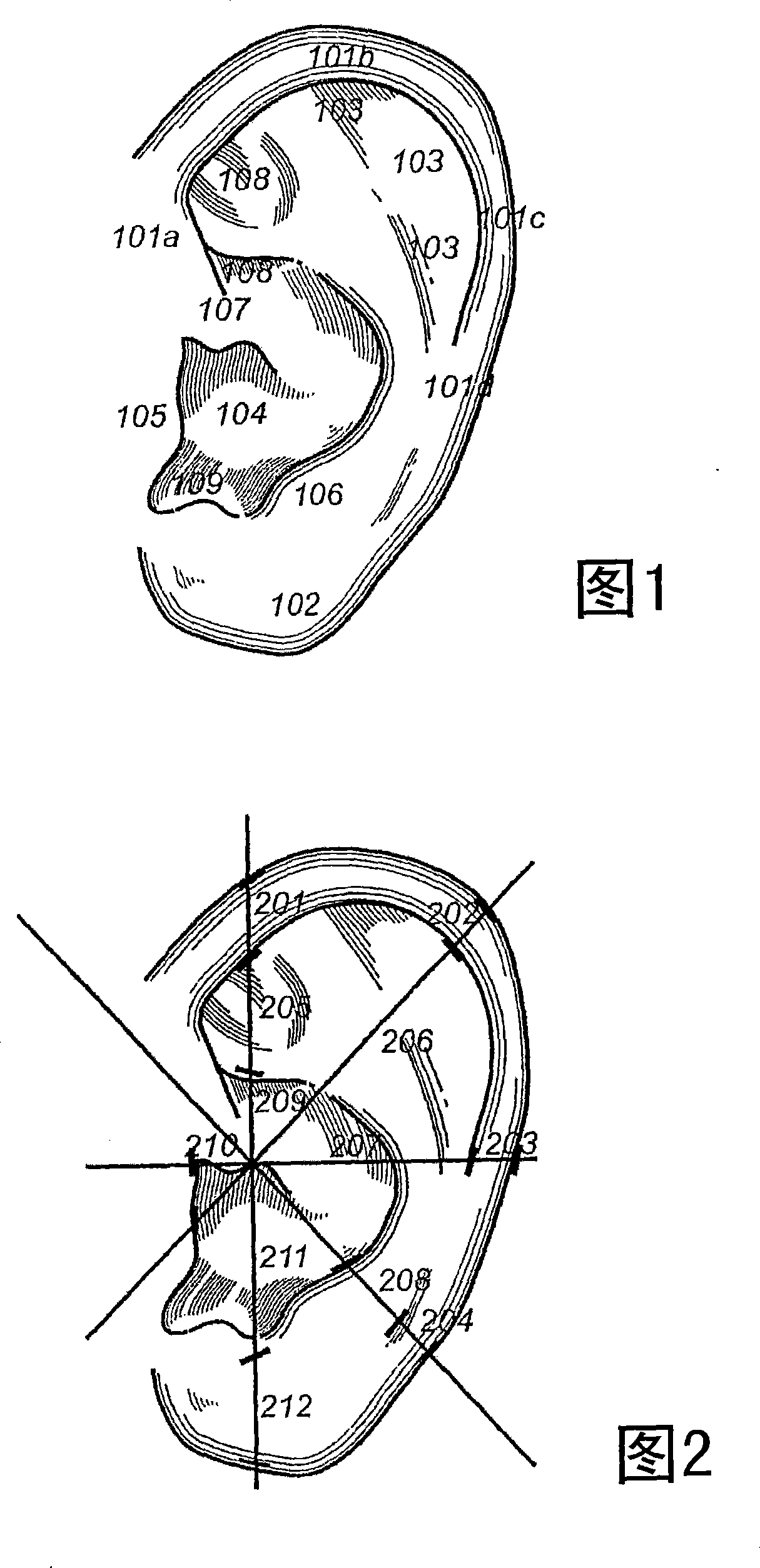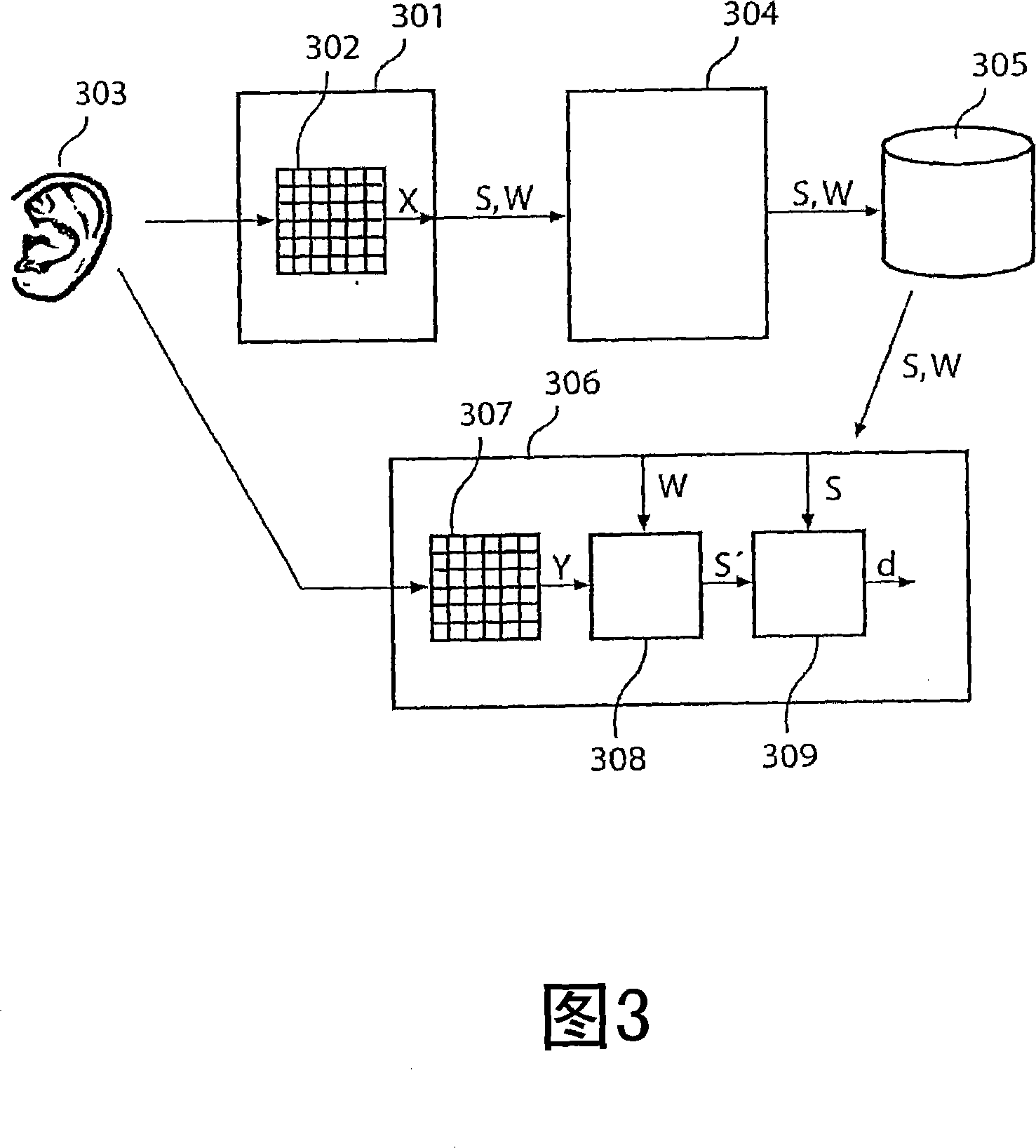Feature extraction algorithm for automatic ear recognition
A feature vector, ear positioning technology, applied in the field of ear recognition, can solve problems such as movement, achieve high processing power, robustness and high efficiency against rotation and scaling errors
- Summary
- Abstract
- Description
- Claims
- Application Information
AI Technical Summary
Problems solved by technology
Method used
Image
Examples
Embodiment Construction
[0022] Figure 1 shows the anatomy of the human ear, where 101 indicates the helix, 102 the earlobe, 103 the antihelix, and so on.
[0023] Figure 2 shows the segmentation of a human ear according to the Iannarelli method for ear recognition. Numeral designations indicate the locations of anthropometric measurements used in the methods. Typically, four axes extending in eight different directions are used, and 2-4 features (ie, 2-4 pixel values) are used for each axis to determine the shape of the ear. For example, for an axis extending east-west, three measurements are taken.
[0024] Figure 3 illustrates a prior art system for verifying an individuals identity (ie, verification / authentication of the individual) using biometric data associated with the individual. The system comprises a user device 301 arranged with a sensor 302 for deriving a first biometric template X from the configuration 303 of a specific body feature of the individual, in this case the ear. The user e...
PUM
 Login to View More
Login to View More Abstract
Description
Claims
Application Information
 Login to View More
Login to View More - R&D
- Intellectual Property
- Life Sciences
- Materials
- Tech Scout
- Unparalleled Data Quality
- Higher Quality Content
- 60% Fewer Hallucinations
Browse by: Latest US Patents, China's latest patents, Technical Efficacy Thesaurus, Application Domain, Technology Topic, Popular Technical Reports.
© 2025 PatSnap. All rights reserved.Legal|Privacy policy|Modern Slavery Act Transparency Statement|Sitemap|About US| Contact US: help@patsnap.com


